DJI Neo 2 vs DJI Neo: worth the upgrade?
DJI’s most approachable drone just got a big upgrade, but do the Neo 2’s new sensors, gimbal and controls really justify the higher price?
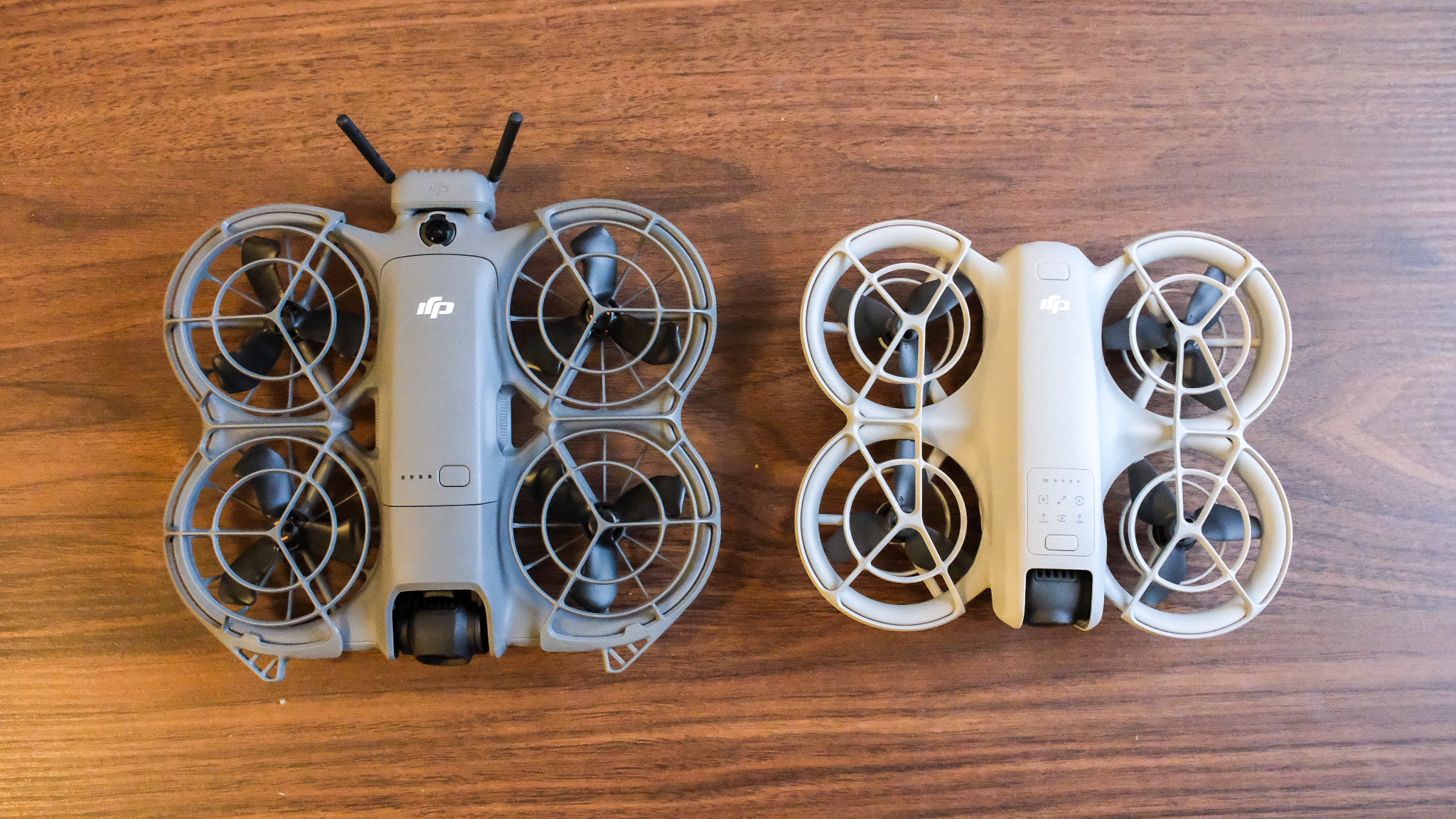

When DJI Neo originally launched in September 2024, it was pitched as the ultimate palm-sized companion: a sub-250g, beginner-friendly drone that could launch from your hand, follow you automatically and capture 4K video without the learning curve. It became a quiet hit for travellers, families and first-time pilots.
Fast-forward 14 months, and the DJI Neo 2 has arrived, a lighter, smarter, and considerably more advanced model. The Neo 2 brings a new dual-axis gimbal, omnidirectional obstacle sensing, gesture and voice control, upgraded image processing, faster Wi-Fi transfer, and nearly double the internal storage.
It also costs about £40 / €40 more than the first-generation model. So, is it worth upgrading if you already own a Neo, or should you stick with what you have? Let’s break down every key area of improvement in DJI's best drones for beginners.
DJI Neo 2 vs DJI Neo
Price and value for money
At launch, the DJI Neo retailed for £169 / €199 / $199, depending on region. The Neo 2 starts at £209 / €239 (~$259 / ~AU$579). That’s roughly a 20–25 per cent increase, which is not insignificant for an entry-level product.
However, when you consider what’s added, including LiDAR obstacle sensing, an extra gimbal axis, more storage, faster transfer speeds and smarter control options, the jump feels entirely reasonable.
The Neo 2 sits comfortably between the original Neo and the DJI Flip, offering features from higher tiers without the complexity or bulk.
Winner: The Neo 2 is slightly pricier but still an outstanding value.
Get all the latest news, reviews, deals and buying guides on gorgeous tech, home and active products from the T3 experts
Design and build quality
At a glance, the two drones share the same design DNA: fixed-arm frames with integrated propeller guards and the same toy-meets-tech aesthetic. But a closer look reveals the Neo 2 is more polished.
It’s actually seven grams lighter than the original despite adding several new sensors, weighing in at 151 g versus the Neo’s 158 g. The footprint has grown slightly (147 × 171 × 41 mm compared to the Neo’s 130 × 157 × 48.5 mm), giving it a wider, lower stance that feels steadier in the air.
The Neo 2 also features a small status display beside the camera, replacing the LED light setup on the Neo’s top shell. It shows battery, mode and connection info at a glance, so you no longer need to tilt or reposition the drone mid-setup.
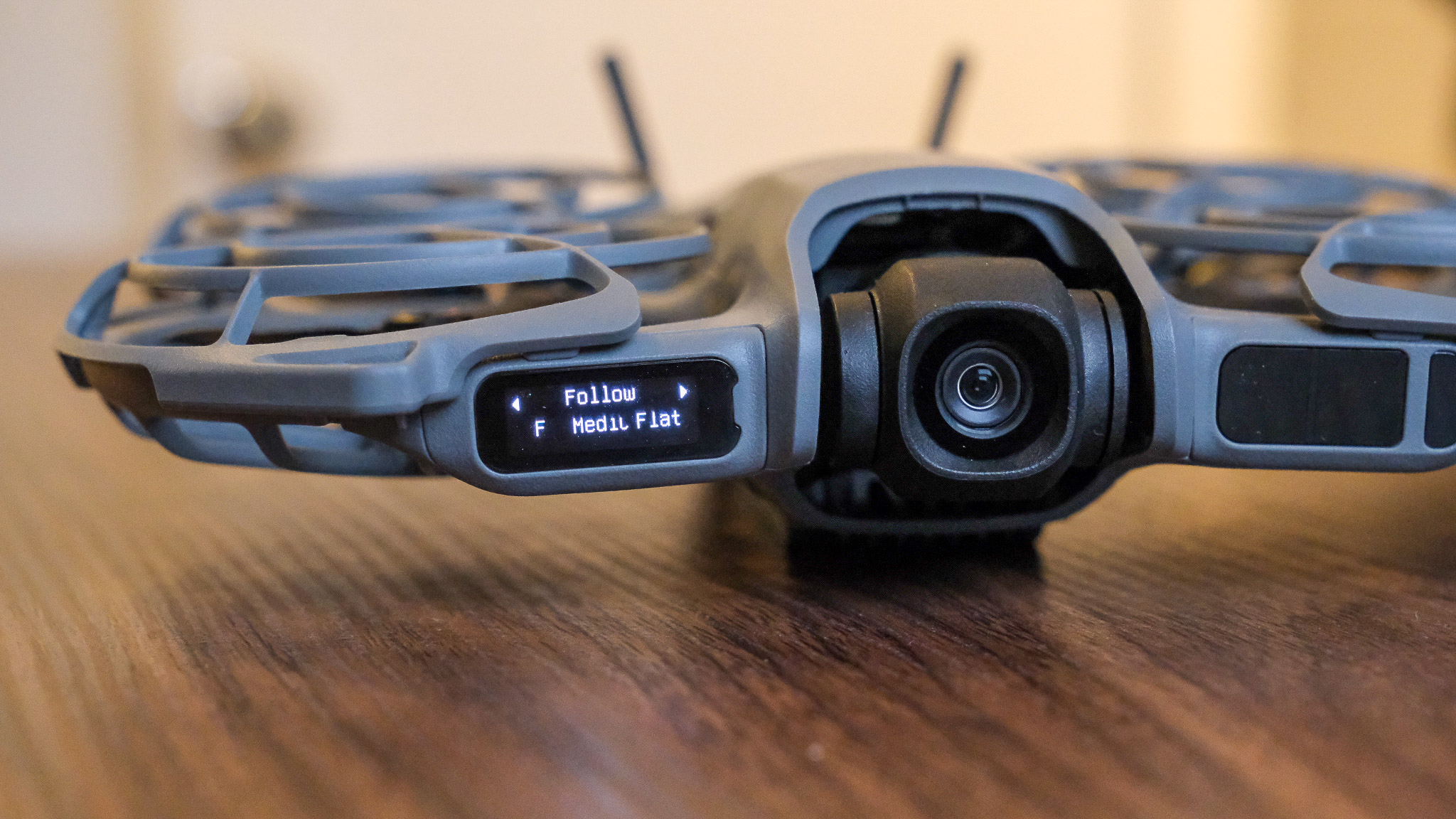
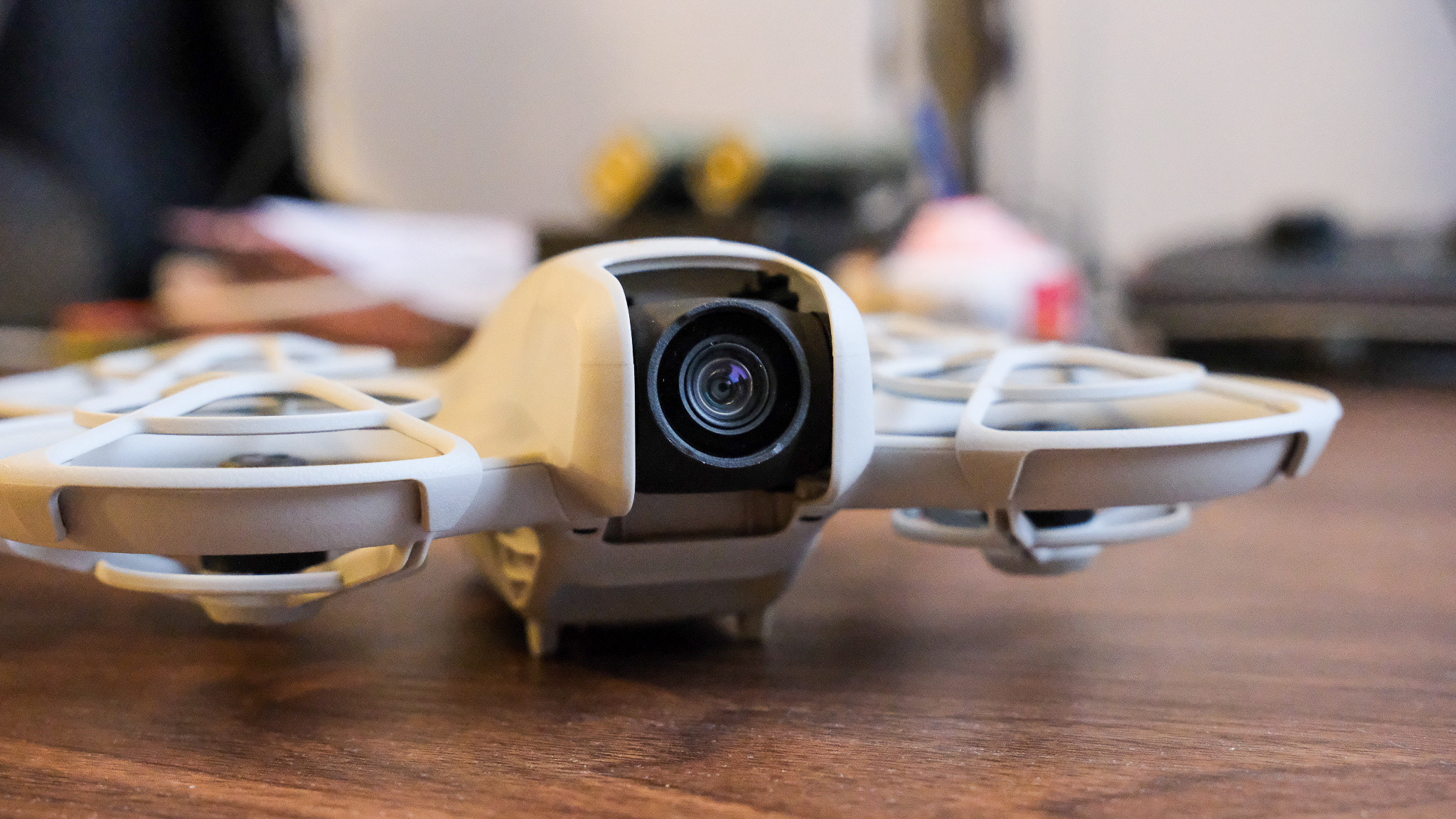
DJI has also reworked the button layout, placing three controls under the right propeller arms for mode selection and power. They’re easier to reach but arguably too close together, an ergonomic misstep the Neo never had.
The real leap is in safety. The Neo relied on a downward sensor for hover stability and little else. The Neo 2 adds omnidirectional obstacle sensing, combining front-facing LiDAR, monocular vision sensors and a downward infrared module for full 360° awareness. It’s a game-changer for beginners, dramatically reducing the chance of collisions indoors or near trees.
Both models share a fixed-arm design, making them instantly fly-ready with no folding arms or fiddly pre-flight prep required. Still, the Neo 2 feels more refined, with smoother contours, a sturdier prop-guard frame and improved materials that look and feel more premium.
Winner: Neo 2 wins easily. It’s lighter, safer and more practical to handle.
Camera performance
Both drones use a 12 MP 1/2-inch CMOS sensor, but the Neo 2’s imaging pipeline has been completely rebuilt. It now uses an f/2.2 aperture lens (versus f/2.8 on the Neo) for better low-light capture, paired with a new image processor that reduces noise and improves dynamic range.
A significant hardware change is the move from a single-axis tilt gimbal to a dual-axis mechanical gimbal that stabilises both tilt and roll. Combined with DJI’s digital RockSteady-style electronic stabilisation, this produces far smoother footage, especially during turns or when following moving subjects.
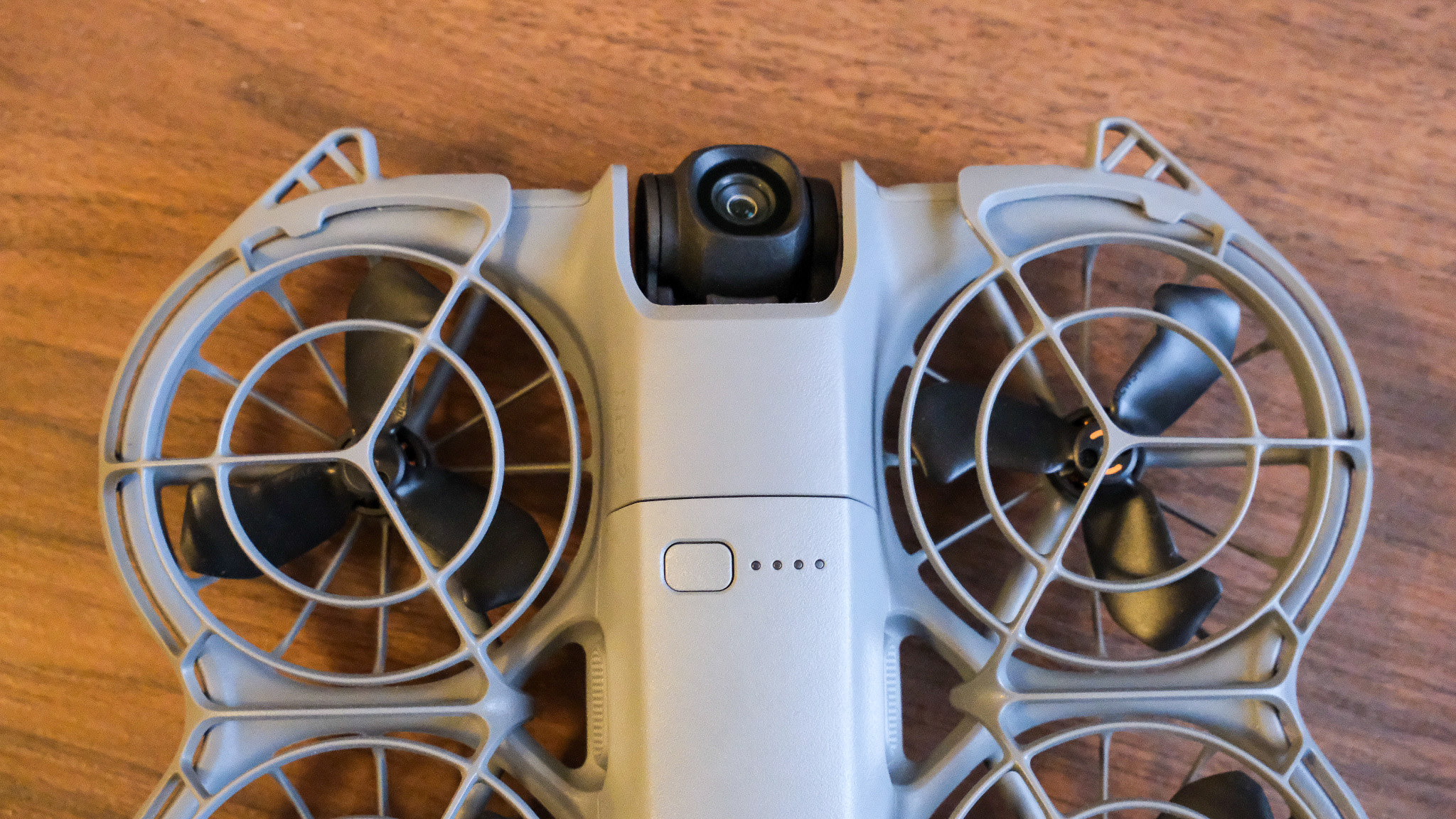
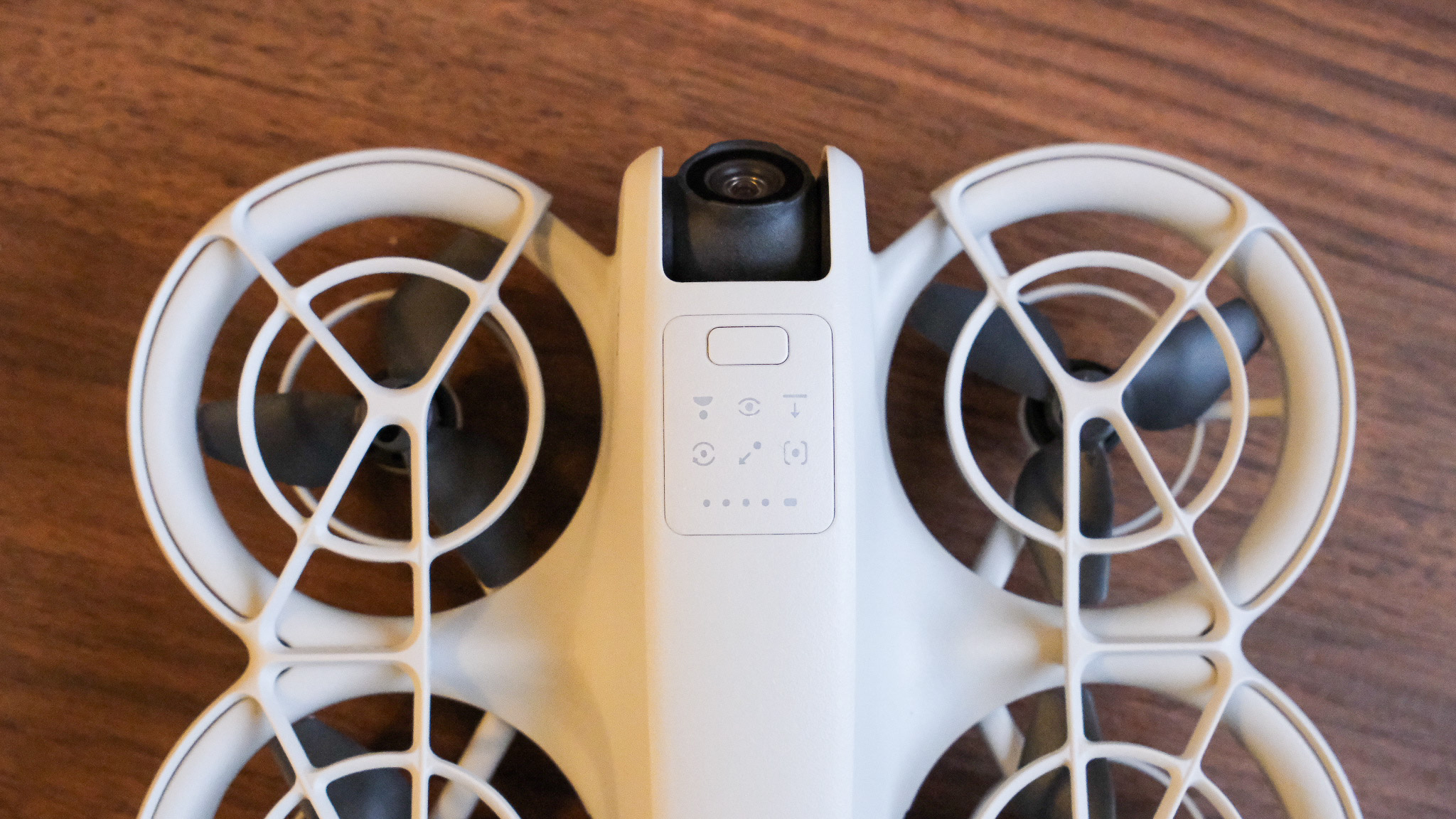
Video performance is another major leap. The Neo topped out at 4K@30fps. The Neo 2 can record 4K@60fps, with a 100 fps slow-motion mode, plus a 2.7 K vertical video mode for social media clips. The colour rendition is richer and less saturated, and HDR blending has been tuned to preserve skies and highlights more effectively.
DJI’s ActiveTrack 360° has also been re-engineered. The Neo tracked in four directions (front, back, left, right); the Neo 2 now follows subjects in eight directions, including diagonals, for more natural, cinematic camera moves. The difference in responsiveness is immediate: the Neo 2 locks onto a subject faster and stays locked even if they change direction.
Still photography remains 12 MP, but the Neo 2 produces cleaner JPEGs with smoother tonal gradients. Its SelfieShot feature (entirely new) can automatically switch between waist-up, full-body and long framing, letting you capture group shots without touching a controller.
Winner: Neo 2 again takes the win. The extra gimbal axis and frame-rate boost alone justify the price jump, even before factoring in smarter tracking.
Flight performance
Both drones are aimed squarely at beginners, but the Neo 2 flies like a more mature machine. The new omnidirectional obstacle sensing system, powered by LiDAR, lets it navigate safely in tighter spaces. The original Neo was stable but could be caught out by crosswinds or nearby walls; the Neo 2 feels grounded, deliberate and confident in flight.
The ActiveTrack 360° system now supports tracking speeds of up to 12 m/s, up from roughly 10 m/s on the Neo, letting it keep pace with cyclists, runners and even skateboarders. In follow mode, the Neo 2’s wider stance helps reduce micro-vibrations that sometimes crept into the Neo’s video feed.
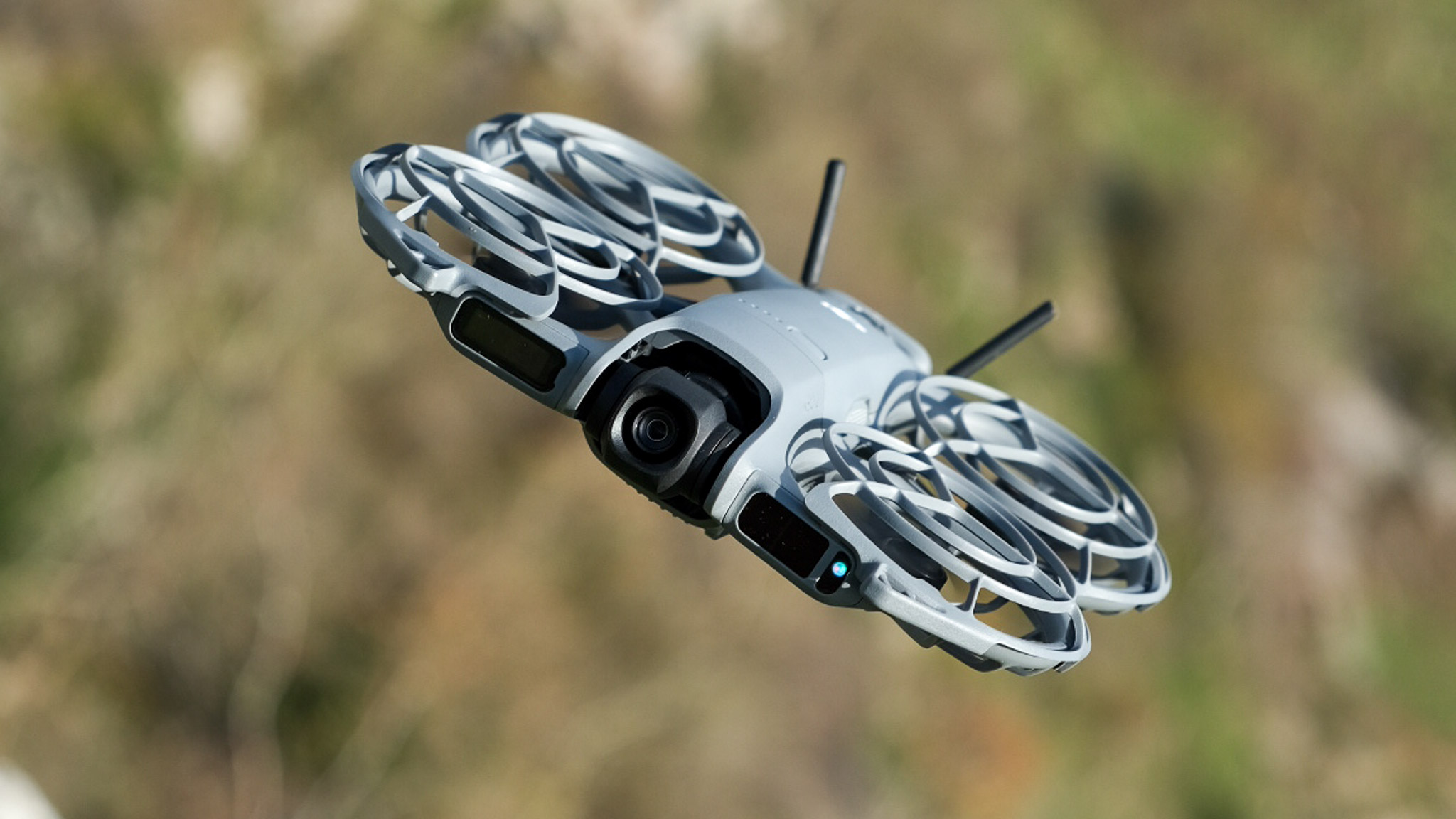
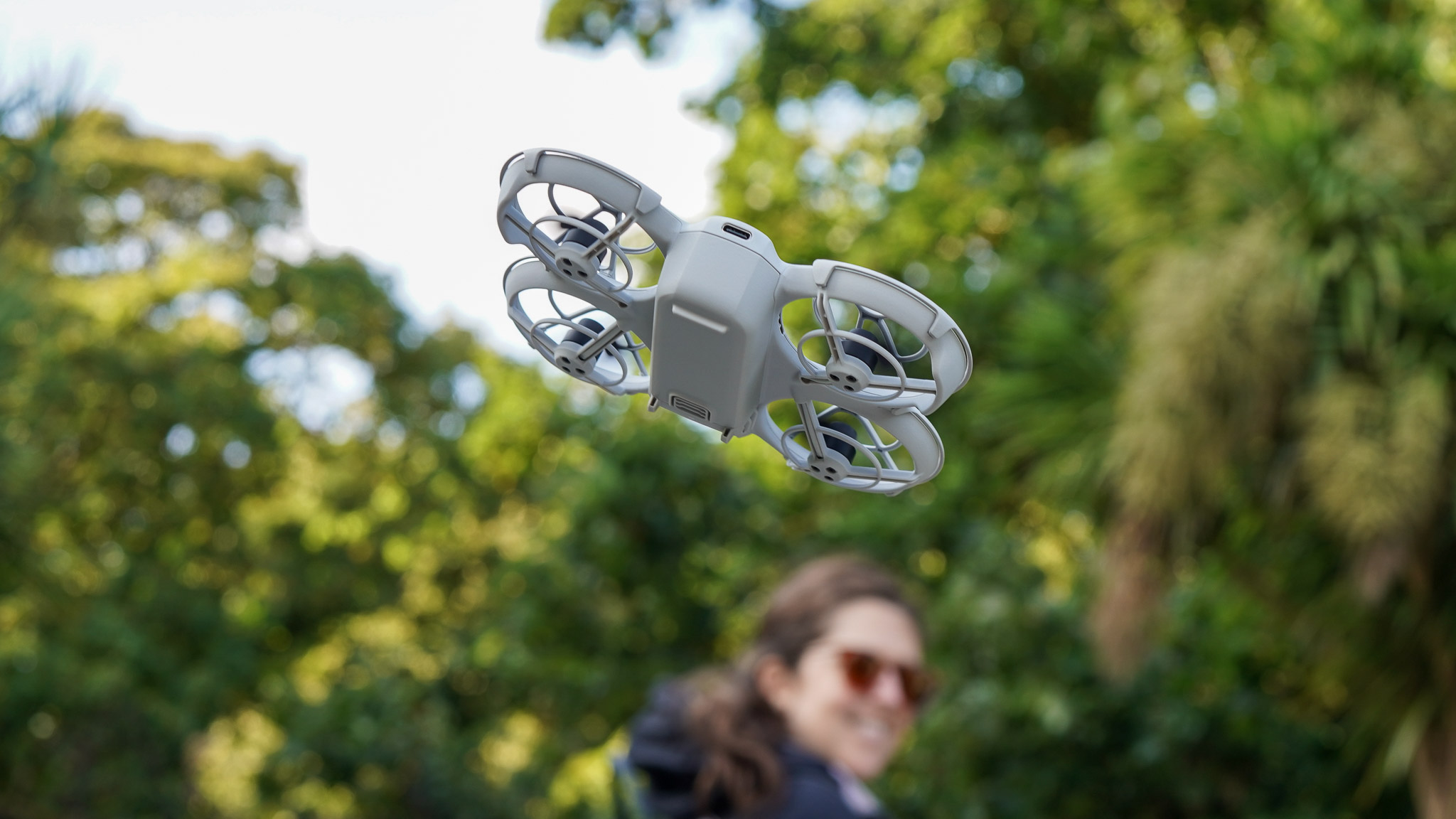
Where the Neo 2 really shines is in how it can be flown. Beyond the standard phone-based control, it supports gesture control (using one or two hands to move and re-position it) and voice control via your smartphone or Bluetooth headset. There’s even support for the DJI RC-N3 remote for up to 10 km of video transmission, double what the Neo could manage.
Finally, the Neo 2 introduces Return-to-Palm, which automatically guides the drone back to your outstretched hand. It’s a charming, practical feature that underscores how much thought has gone into ease of use.
Winner: The Neo 2 feels like a true DJI drone, not just a smart toy. Beginners will notice the improvement instantly.
Battery life and charging
Neither drone is designed for endurance flying, but the Neo 2 ekes out a small win. It delivers up to 19 minutes of flight per charge, compared to the Neo’s 18 minutes. Real-world use puts both in the 15–17 minute range, depending on conditions.
Charging, however, has improved. The Neo 2’s redesigned battery locks in more securely and supports faster charging, roughly 40 minutes for a full top-up via USB-C, versus about 50 minutes on the Neo. DJI also upgraded the thermal management system to prevent overheating during back-to-back sessions.
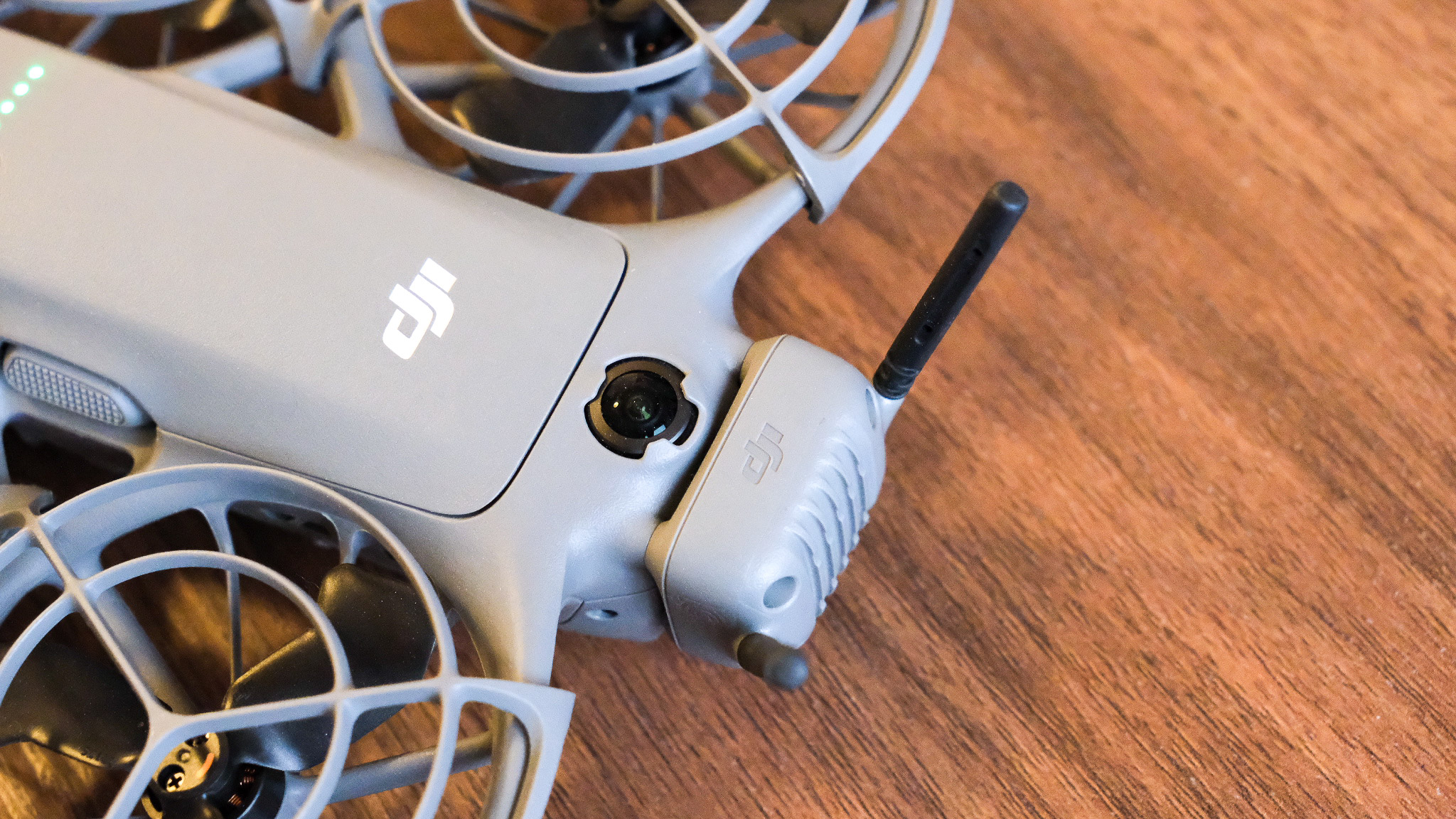
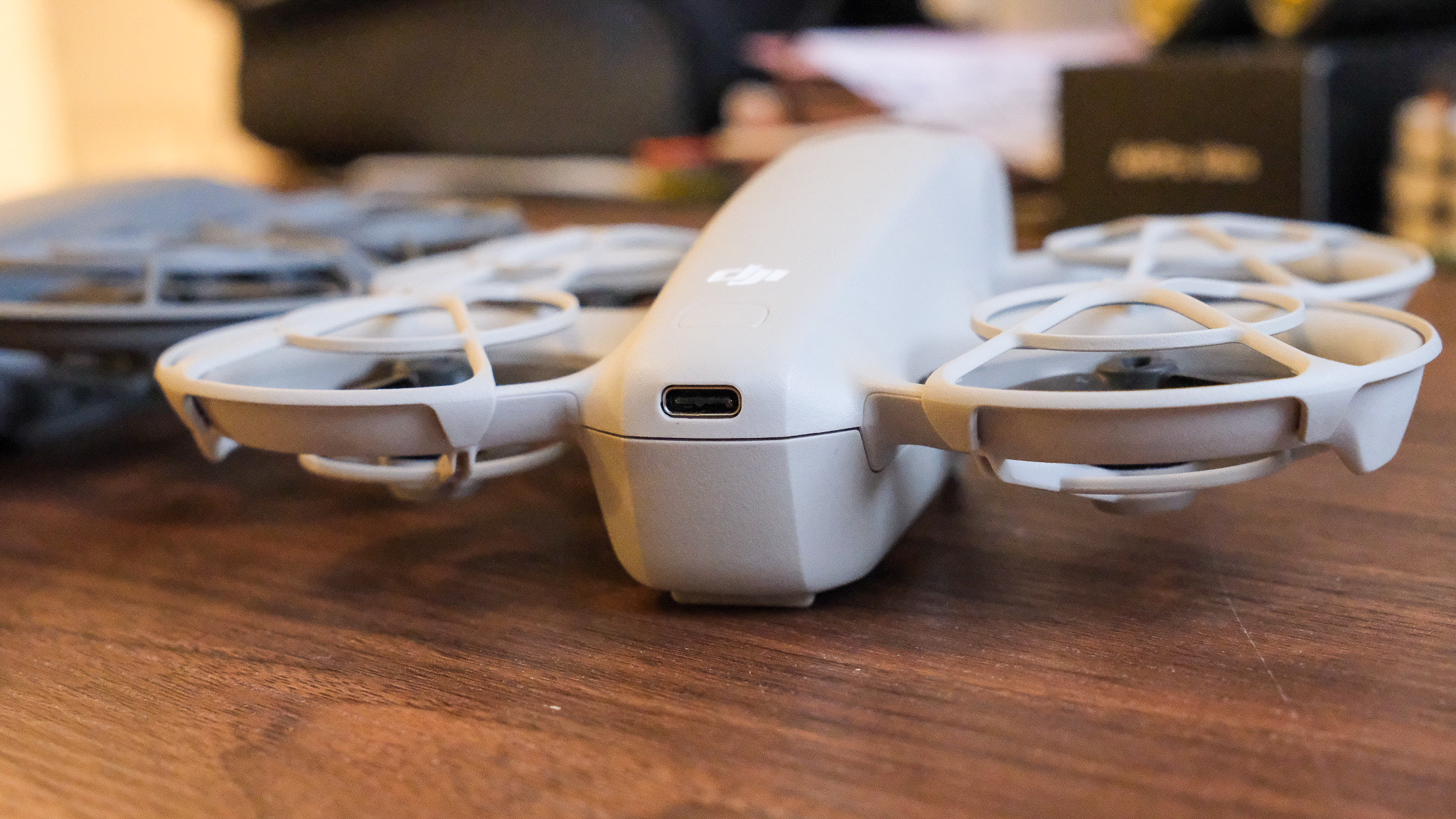
The optional Fly More Combo remains the smarter buy for both models, bundling two extra batteries and a three-bay charger that automatically prioritises the lowest-charged pack.
Winner: Small upgrade, but an upgrade nonetheless. The Neo 2 charges quicker and feels more reliable over time.
Storage and connectivity
Storage is one of the biggest quality-of-life upgrades. The original Neo offered 22 GB of internal memory with no microSD slot, meaning you could record only about 40 minutes of 4K footage before having to transfer files manually. The Neo 2 bumps that to a generous 49 GB, enough for over 100 minutes of 4K 60 fps video.
It also supports Wi-Fi transfer speeds up to 80 MB/s, compared to roughly 30 MB/s on the Neo, drastically reducing offload times. You can even connect directly to the DJI Fly app without cables, and it automatically detects new clips when the drone reconnects.
Winner: Neo 2 again. Faster transfers and more storage make a huge difference to day-to-day usability.
Verdict
The DJI Neo was a simple, affordable and surprisingly capable beginner drone. The Neo 2 builds on that foundation so convincingly that it feels like the product DJI wanted to make the first time around.
It’s lighter, safer, and dramatically more capable in the air. The improved gimbal and faster video modes make footage look far more professional, while LiDAR-based obstacle sensing gives you the confidence to fly in spaces that would terrify most micro-drones. Gesture and voice controls are fun but practical, and the bump in storage and Wi-Fi speed makes the day-to-day experience smoother.
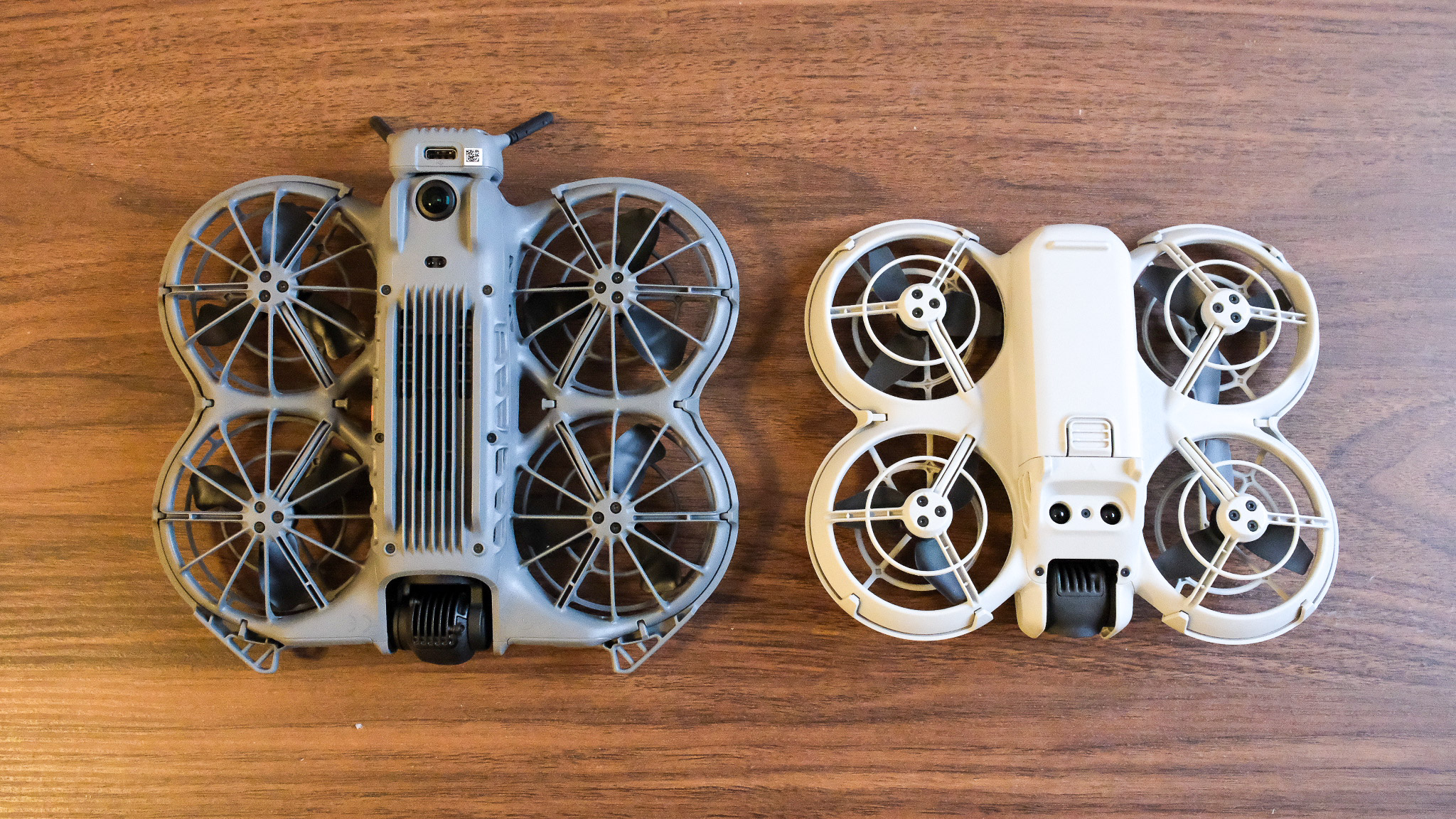
If you already own a Neo and mostly use it for occasional selfies or travel clips, you don’t need to upgrade; the original is still fun and functional. But if you film frequently, value better stabilisation, or want a drone that’s genuinely hard to crash, the Neo 2 is absolutely worth it. It’s still the most accessible DJI drone you can buy, just now with a lot more advanced tech.

Matt Kollat is a journalist and content creator who works for T3.com and its magazine counterpart as an Active Editor. His areas of expertise include wearables, drones, fitness equipment, nutrition and outdoor gear. He joined T3 in 2019. His byline appears in several publications, including Techradar and Fit&Well, and more. Matt also collaborated with other content creators (e.g. Garage Gym Reviews) and judged many awards, such as the European Specialist Sports Nutrition Alliance's ESSNawards. When he isn't working out, running or cycling, you'll find him roaming the countryside and trying out new podcasting and content creation equipment.
You must confirm your public display name before commenting
Please logout and then login again, you will then be prompted to enter your display name.